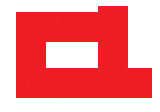Conference Structure
The NAACL 2021 conference is fast approaching, and we wanted to give you a quick overview of the conference format and schedule.
NAACL 2021 will be held as a completely virtual conference, in response to the restrictions imposed by the COVID-19 pandemic. We are using the Underline platform to host the conference events online, including pre-recorded videos, interactive presentations and live poster sessions. A walk-through video for navigating NAACL 2021 using the Underline is available here.
There will be the total of 499 presentations at the main conference, which includes:
- 350 long papers
- 127 short papers
- 18 papers published in the Transactions of the Association for Computational Linguistics (TACL), and
- 4 papers from the journal of Computational Linguistics (CL).
There are also 39 industry track papers, 17 system demonstrations, and 22 Student Research Workshop (SRW) papers, which will be presented in sessions parallel with the main track.
Following recent successful online events, our virtual format for the main conference includes both interactive talk sessions and posters in Gather.Town. A 12-minute video will also be available for long papers and a 7-minute video for short papers, to be viewed at any time during or after the conference.
This year, for the first time, there will be no distinction between oral and poster papers—all accepted papers will be presented in the interactive format.
The papers will be grouped into 80-minute interactive sessions by subject area, with 5–6 papers per session. Each session will consist of two segments: The first segment (approximately 50 minutes) will be held in a Zoom conference room and will consist of a brief oral pitch for each paper (5 minutes for long papers, 3 minutes for short papers), followed by a live Q&A (3 minutes per paper).
The second segment of each session will take place in Gather.Town and will have poster presentations for each paper.
The goal of this format is to allow the audience to engage into an in-depth discussion with the authors if desired. This is a new model that likely will not scale to much larger conferences, but will hopefully allow for rich interactions at the conference. This format only requires each author to be present for a single session.
For the oral pitches for in the first segments, we advise authors to think of these as brief summaries of each paper. The authors can use any format they prefer; they may want to use a reduced set of slides, play a part of their video, or use their poster as a prop. The idea was to have a “reminder” pitch before the Q&A for each paper. Then the poster segment of each session can be used by the folks interested in each paper for longer discussions with the authors.
The industry track and SRW sessions will follow the same format, while system demonstrations have pre-recorded videos, posters, and longer (80 minutes) Gather.Town sessions where the presenters could also demonstrate their systems interactively.
In addition to paper sessions, there will be keynote presentations (recorded or live), followed by live Q&A, best paper awards session, a business meeting, opening and closing sessions, as well as mentoring sessions, social events and sponsor booth events.
The conference will have a morning and an evening session block to account for the difference across time zones, with one keynote talk and 3 paper sessions per block, for a total of 6 paper sessions per day. The blocks are timed as follows:
- The morning block will run from 8 am Pacific Daylight (UTC-7) / 11 am Eastern Daylight (UTC-4) to 1 pm Pacific / 4 pm Eastern.
- The evening block will run from 4 pm Pacific / 7 pm Eastern to 9 pm Pacific / 12 am Eastern.
These time blocks were chosen to maximize access to different portions of the program for people located in different time zones. The interactive sessions within each block were then arranged to be in the normal waking hours for the contact author of each paper as much as possible.
Finally, the schedule also includes a business meeting from 11:40–1pm PDT on June 8th and a special plenary session for the best papers from 11:40–1:20pm PDT on June 9th.
Here is a high-level program overview:

Outside of the main conference days, there are 6 tutorials on June 6, which will be presented in 4-hour-long live sessions, and 22 workshops on June 6, 10, and 11. Most workshops include both live video-calls and Gather.Town poster sessions.
The D&I committee also coordinated a full schedule of events, including 7 affinity groups socials, 5 D&I sessions, and several thematic events: Queer in AI and Mexican school mentorship sessions, 2 panels on getting into NLP research, and tours that will virtually explore Mexico City and its linguistic diversity. Further, the program includes 17 Birds-of-a-Feather sessions, 30 small group mentoring meetings, and 4 open large-group mentoring meetings.
Participants are also welcome to stop by the virtual Gather.Town lounge at any time during the conference and have the opportunity to run into colleagues and visit sponsor spaces. Areas designed for specific research topics will be included. Attendees can also network using the Whova conference app.
